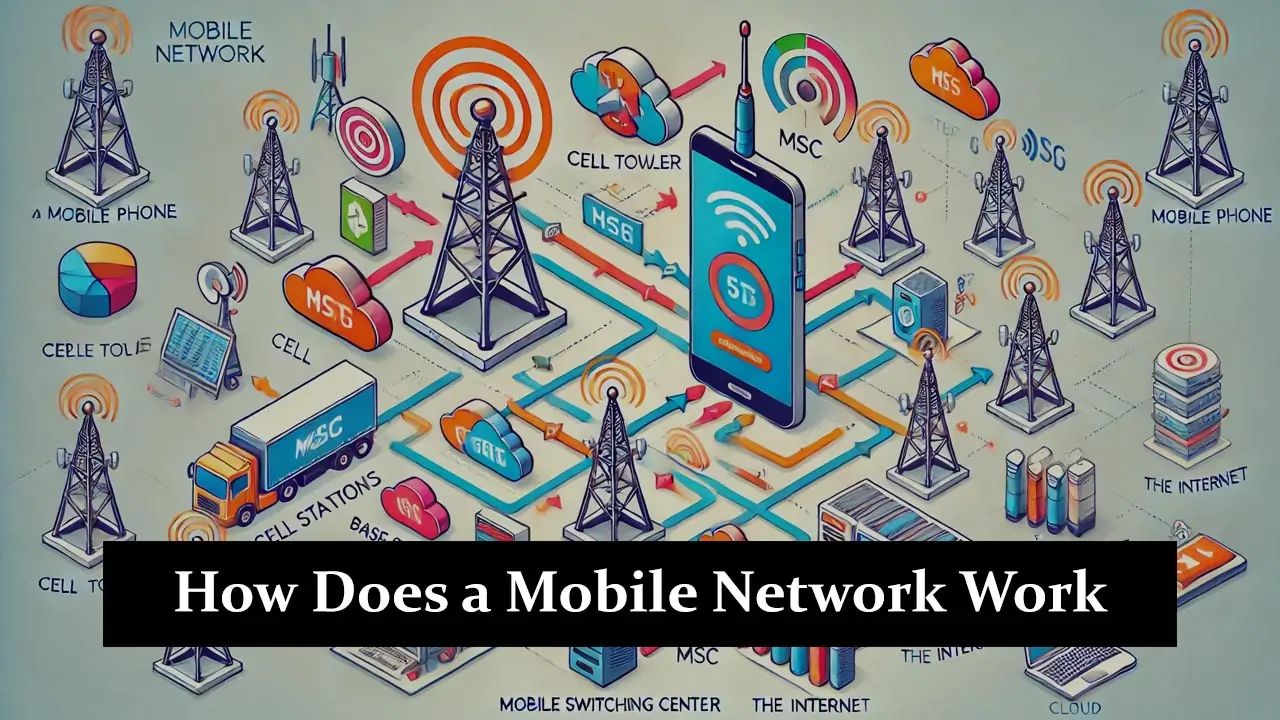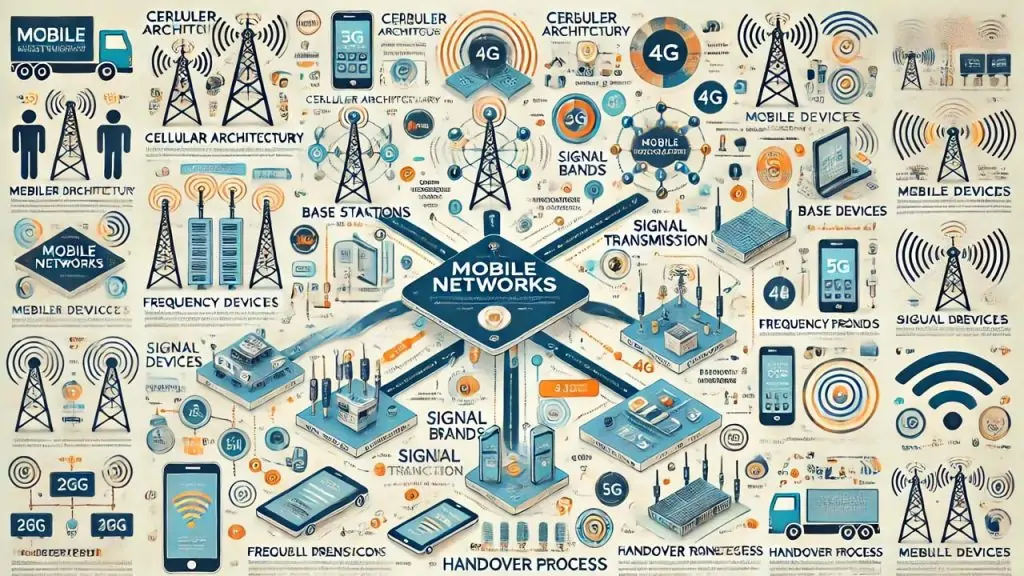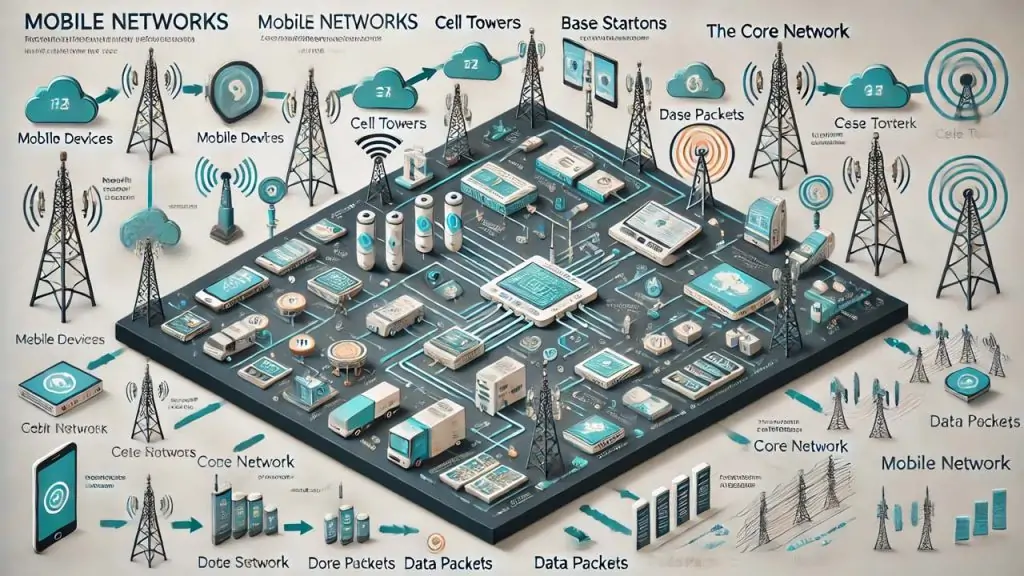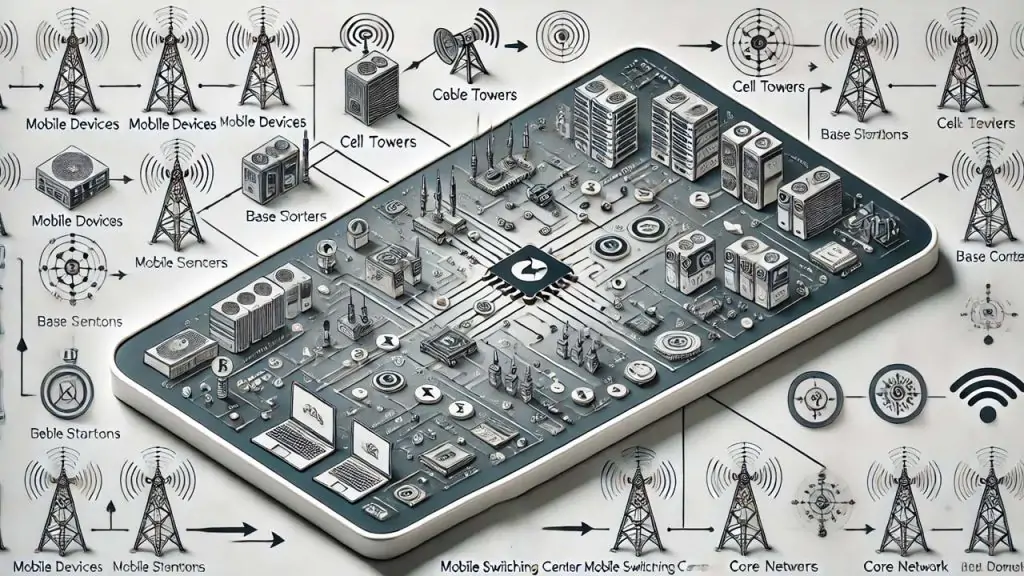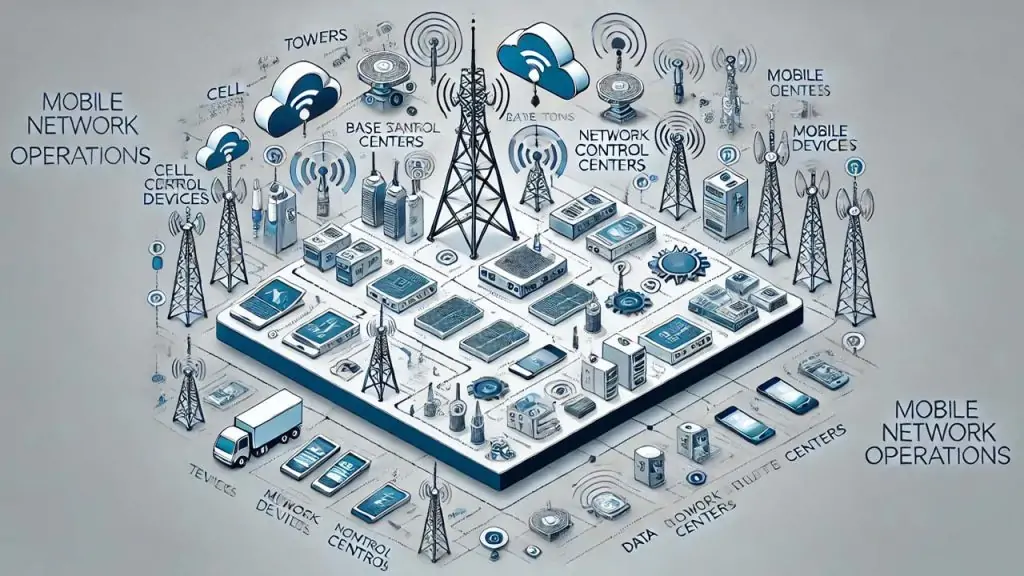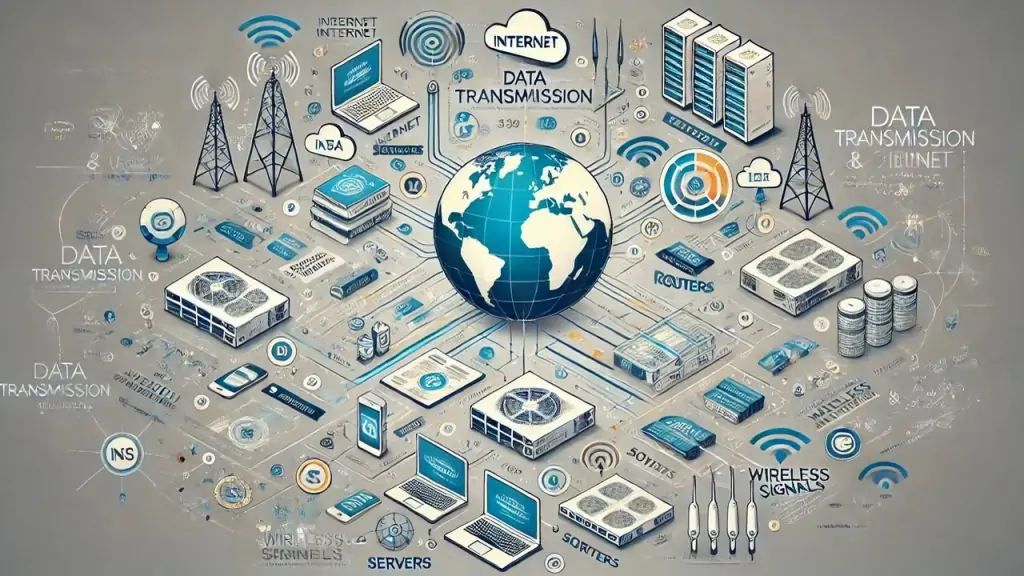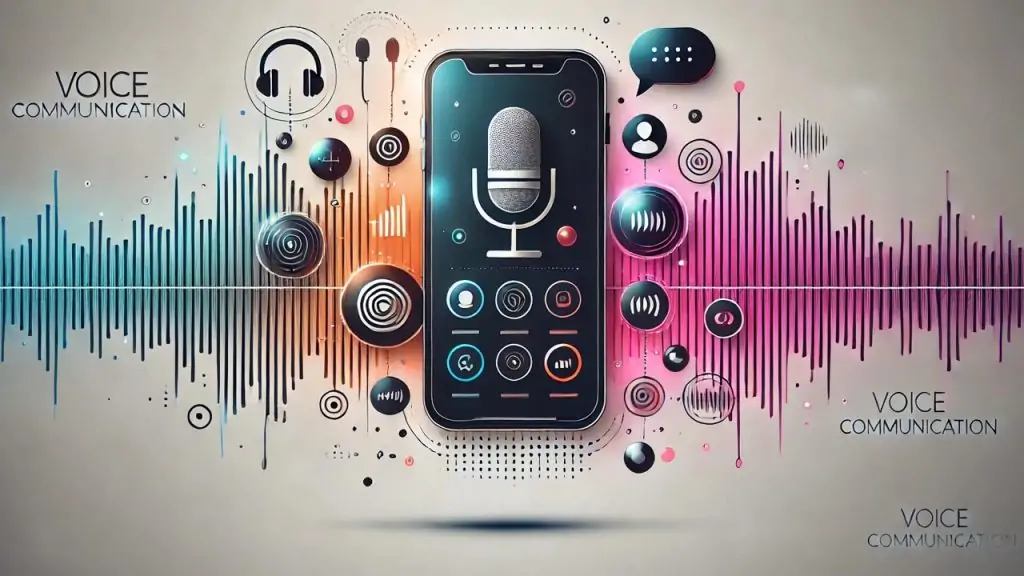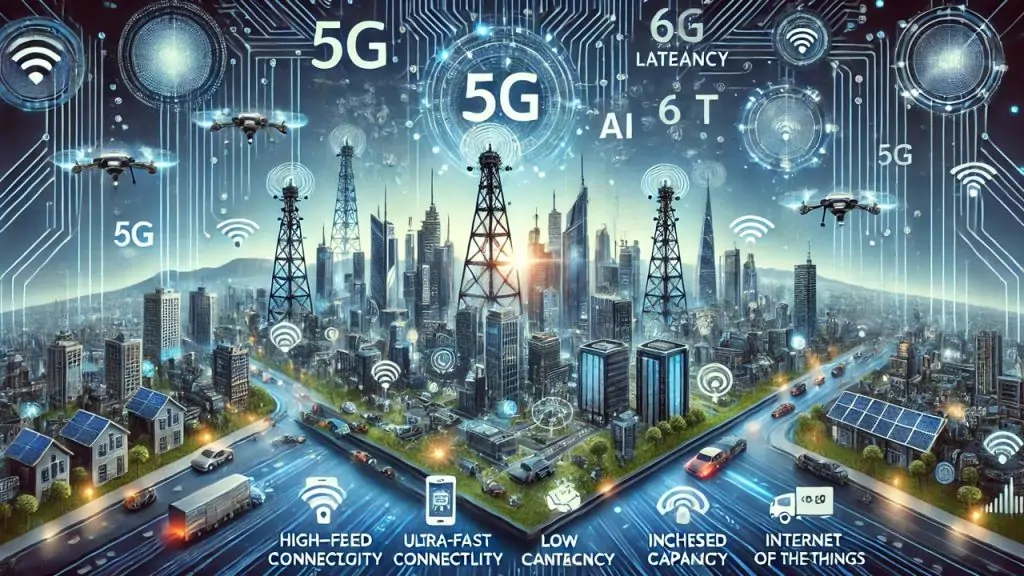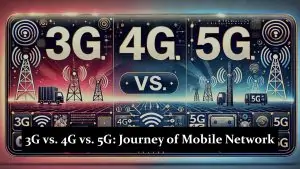Mobile networks are the backbone of modern communication, enabling seamless connectivity and access to information on the go. They have revolutionized how we communicate, work, and entertain ourselves. This article aims to comprehensively understand mobile network’ components, operations, technologies, and future advancements.
Basic Concepts of Mobile Networks
Mobile networks are wireless communication systems that use radio waves to connect mobile devices to a network of cell towers and base stations. They enable voice calls, text messaging, and internet access.
Key Components:
- Cell Towers: Fixed structures that transmit and receive signals within their coverage area, forming the backbone of mobile networks.
- Mobile Devices: Smartphones, tablets, and other portable devices that connect to the network for communication and data services.
- Base Stations: Facilities that manage communication between mobile devices and the core network, ensuring efficient data transfer.
Types of Mobile Networks:
- 2G: Introduced digital voice and basic data services.
- 3G: Offered faster data speeds and improved voice quality.
- 4G: Brought high-speed internet and enhanced multimedia capabilities.
- 5G: The latest generation, providing ultra-fast data speeds, low latency, and support for many connected devices.
How Mobile Networks Transmit Data
- Radio Waves and Frequency Bands: Mobile networks use radio waves to transmit data over various frequency bands, each supporting different services and capacities.
- Cell Towers’ Role: Cell towers transmit and receive signals from mobile devices, ensuring continuous connectivity as users move within the coverage area.
- Handovers Between Cell Towers: When users move from one cell to another, the network seamlessly transfers the connection to the next cell tower, a process known as handover, to maintain uninterrupted service.
Concepts of Uplink and Downlink:
- Uplink: Data sent from a mobile device to the network.
- Downlink: Data is sent from the network to a mobile device, ensuring two-way communication.
Structure of a Mobile Network
- Core Network and Its Components: The core network is the central part of a mobile network, responsible for routing calls, managing data sessions, and handling subscriber information.
- Access Network and Its Components: The access network includes cell towers and base stations, which connect mobile devices to the core network and enable communication.
- Mobile Switching Center (MSC): The MSC handles call routing, billing, and mobility management, ensuring efficient network operations and user connectivity.
Home Location Register (HLR) and Visitor Location Register (VLR):
- HLR: A database storing information about subscribers authorized to use the network.
- VLR: A database temporarily holds information about subscribers in the network’s coverage area.
Base Station Subsystem (BSS)
The BSS includes base stations and their controllers, which manage radio communication with mobile devices and ensure efficient data transfer.
Network Technologies
- GSM (Global System for Mobile Communications): GSM is a standard for mobile communication using time division multiple access (TDMA) to allow multiple users to share the same frequency band efficiently.
- CDMA (Code Division Multiple Access): CDMA technology uses spread-spectrum techniques to enable multiple users to share the same frequency band simultaneously, enhancing network capacity.
- LTE (Long-Term Evolution): LTE is a standard for high-speed wireless communication, providing faster data rates and improved performance compared to previous technologies.
- 5G and Its Advancements: 5G represents the latest advancement in mobile technology, offering unprecedented data speeds, low latency, and support for numerous connected devices. It facilitates innovations like autonomous vehicles and smart cities.
Mobile Network Operations
How a Call is Made
When a user dials a number, the mobile device sends a signal to the nearest cell tower and then routes the call through the network to the recipient, ensuring a clear and reliable connection.
- The user dials a number on their mobile device.
- The signal is sent to the nearest cell tower.
- Cell tower routes the call through the network.
- The call is connected to the recipient.
Data Transfer Process for Internet Usage
Mobile devices send and receive data packets through the network’s infrastructure, enabling internet access and various online services, from browsing to streaming.
- Data is broken into packets.
- Packets are transmitted through the network.
- Packets are reassembled at the destination device.
- The device processes the data for internet usage.
Role of SIM Cards
SIM cards authenticate users on the network, store subscriber information, and enable secure access to services, ensuring user privacy and security.
- The user inserts a SIM card into the mobile device.
- A SIM card stores subscriber information.
- The network authenticates the subscriber.
- Secure access to services is granted.
Data Transmission and Internet Access
Packet Switching
Packet switching breaks data into small packets transmitted independently and reassembled at the destination, optimizing network efficiency and speed.
- Data is divided into packets.
- Packets are sent through various paths in the network.
- Packets are reassembled at the destination.
- Data is processed by the receiving device.
Mobile Broadband
Mobile broadband provides high-speed internet access over mobile networks, supporting activities like streaming, gaming, and online communication, making it essential for modern life.
- Mobile devices connect to the network.
- High-speed data transmission is enabled.
- Users access internet services.
- Activities like streaming and gaming are supported.
Voice Communication
Circuit Switching
Traditional voice calls use circuit switching, where a dedicated path is established for the duration of the call, ensuring clear and reliable communication.
- The call is initiated by the user.
- A dedicated path is established for the call.
- Voice data is transmitted through the path.
- The call is terminated after communication.
Voice over LTE (VoLTE)
VoLTE transmits voice calls over 4G LTE networks, offering higher quality and faster connection times than traditional circuit-switched calls.
- VoLTE call is initiated.
- Voice data is transmitted over a 4G LTE network.
- High-quality voice communication is established.
- The call is completed with improved connection times.
Security and Privacy in Mobile Networks
Encryption Techniques
Mobile networks use encryption to protect data transmitted over the airwaves, ensuring privacy and security for users.
- Data is encrypted before transmission.
- Encrypted data is sent over the network.
- Data is decrypted at the receiving end.
- Secure communication is maintained.
Authentication Processes
Authentication verifies the identity of users and devices, preventing unauthorized access to the network and protecting sensitive information.
- The user/device requests access to the network.
- The network verifies identity through authentication.
- Access is granted if authentication is successful.
- Unauthorized access is prevented.
Threats and Security Challenges
Mobile networks face various threats, including hacking, malware, and privacy breaches. Continuous advancements in security measures are crucial to mitigate these risks and protect users.
- Network security is monitored and updated.
- Measures are taken to prevent hacking and malware.
- User data privacy is safeguarded.
- Security challenges are addressed continuously.
Future of Mobile Networks
Innovations in 5G and Beyond
5G technology continues to evolve, promising even greater speeds, capacity, and connectivity. Future advancements may include 6G, offering further enhancements in mobile communication.
- 5G network infrastructure is developed.
- New technologies are integrated with 5G.
- Plans for 6G are explored.
- Mobile communication capabilities are enhanced.
Impact of IoT (Internet of Things)
The proliferation of IoT devices will significantly impact mobile networks, requiring robust infrastructure to handle the increased data traffic and connectivity demands.
- IoT devices connect to mobile networks.
- Increased data traffic is managed.
- Network infrastructure is strengthened.
- IoT applications and services are supported.
Upcoming Trends and Technologies
Emerging trends include edge computing, network slicing, and the integration of artificial intelligence to optimize network performance and user experience.
- Edge computing is implemented.
- Network slicing is utilized for efficiency.
- AI is integrated for network optimization.
- Future trends are continuously monitored.
Conclusion
Mobile networks play a vital role in modern communication, providing the infrastructure for voice calls, data transmission, and internet access. As technology evolves, mobile networks will become even more integral to our daily lives, driving innovation and connecting the world in ways we can imagine. The future holds exciting advancements that will further enhance our communication capabilities and improve the overall quality of life.
